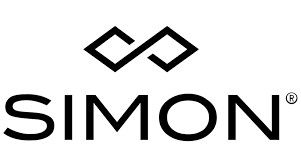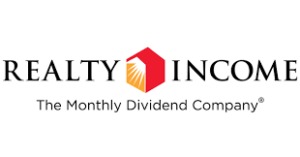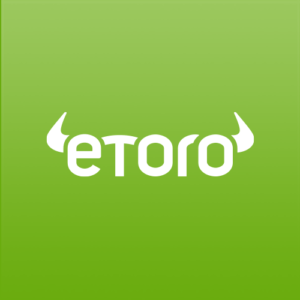If you want to invest in the biggest property funds in the world, it’s easier than ever and in this article we’ll cover exactly how you can do that.
In the dynamic world of investments, real estate (aka property) has historically stood as a beacon of stability and growth. Yet, the traditional path of direct property ownership (which can sometimes include the use of private investor funds) isn’t the only avenue to tap into this sector’s lucrative potential.
Real Estate Investment Trusts (REITs) offer investors an opportunity to gain exposure to vast portfolios of real estate assets without buying or managing properties directly. Today, the global landscape of REITs showcases giants like American Tower Corporation, Simon Property Group, and Prologis, which dominate not just in size but in influence and reach.
For the modern investor, technology has further streamlined the process. Trading platforms like Etoro have made investing in these global REIT powerhouses more accessible than ever, allowing anyone, anywhere, to have a stake in the world’s prime real estate markets.
This article delves into the intricate world of the top three REITs and will guide you through the process of capitalizing on these opportunities via online trading apps.
Whether you’re a seasoned investor or just dipping your toes into the waters of global real estate, there’s never been a more exciting time to explore the possibilities.
Understanding REITs
Real Estate Investment Trusts, commonly known as REITs, have transformed the way individuals can invest in real estate, democratizing access to opportunities that were once reserved for the wealthy or institutional investors. But what exactly are REITs, and why have they become such a prominent investment vehicle? Let’s break it down.
- Definition of REITs: At its core, a REIT is a company that owns, operates, or finances income-producing real estate across a range of property sectors, from offices and apartments to warehouses, hospitals, shopping centers, hotels, and even data centers. These companies offer the general public a chance to invest in these vast portfolios by purchasing stock, much like one would in other publicly traded companies.
- Operational Model: One of the distinguishing features of REITs is their unique operational model. By law, REITs are required to distribute at least 90% of their taxable income to shareholders annually in the form of dividends. This model not only ensures a consistent income stream for investors but also positions REITs as attractive tax-efficient investment options.
- Benefits of Investing in REITs:
- Diversification: With REITs, investors can access a diversified portfolio of real estate assets, which can help spread risk.
- Liquidity: Unlike traditional real estate, which can be time-consuming and costly to sell, REIT shares can be quickly bought or sold on major stock exchanges.
- Transparency: Being publicly traded entities, REITs are subjected to rigorous regulatory oversight and are required to disclose financial performance metrics, giving investors a clear view of their operations and health.
- Steady Income Stream: Thanks to the mandatory dividend distribution model, REITs can provide a consistent and often attractive income stream, in addition to potential capital appreciation.
- Types of REITs: REITs can be classified based on how their shares are bought and sold:
- Publicly Traded REITs: Listed on public stock exchanges and can be bought and sold like other public companies.
- Public Non-Traded REITs: Registered with the SEC but not listed on public stock exchanges.
- Private REITs: Not registered with the SEC and not publicly traded. Typically accessible only to institutional investors.
Furthermore, they can be categorized based on the types of properties they hold or their operational activities:
- Equity REITs: Own and manage income-producing real estate.
- Mortgage REITs (mREITs): Provide financing for real estate and earn income from interest on their investments.
- Hybrid REITs: Engage in both properties ownership and providing real estate financing.
The 3 Biggest Property Funds In The World
The global real estate market presents a massive number of investment opportunities. Yet, amidst this abundance of opportunities, a few giants have consistently made their mark, emerging as leaders in both scale and innovation.
In this spotlight, we turn our attention to the top three REITs (aka Property funds) that have distinguished themselves not just by the sheer size of their portfolios but also through strategic vision, operational excellence, and adaptability to market dynamics.
Our categorization criteria consider a blend of market capitalization, asset growth, revenue generation, and their footprint across major global regions. These titans offer a unique glimpse into the potential and diversity of the real estate sector, extending from communication infrastructure to premium retail spaces and industrial hubs.
Let’s dive deeper into their stories, value propositions, and the reasons for their unmatched global prominence.
American Tower Corporation (AMT)

Overview & Background
With its headquarters located in Boston, Massachusetts, American Tower Corporation began its operations in 1995. Over the years, it evolved from a small tower operator into a global leader in communication infrastructure.
AMT’s primary mission has been to lease space on its vast array of communication sites to diverse clients, ranging from wireless service providers to radio and television broadcast entities. By 2022, the company had amassed a portfolio of over 195,000 communication sites, establishing its footprint in key regions like the Americas, Africa, Europe, and Asia.
Key Financial Indicators:
- Market Capitalization: AMT’s impressive market cap ($74.6bn) underscores its dominant position in the REIT sector, signaling strong investor confidence and valuation.
- Consistent Revenue Growth: The company has showcased a commendable track record of expanding its revenue streams, year after year, emphasizing its capability to monetize its assets effectively.
- Stable EBITDA: AMT’s consistent EBITDA (Earnings Before Interest, Taxes, Depreciation, and Amortization) figures highlight its operational efficiency and profitability.
Investment Potential
As the world transitions to a more connected digital era, underpinned by 5G technology and IoT proliferation, the demand for sturdy and expansive communication infrastructure is set to skyrocket. Given AMT’s strategic infrastructure assets peppered globally, it stands well-equipped to cater to this burgeoning demand.
Benefits For Investors:
- Recurrent Revenue Model: AMT’s structure revolves around long-term lease contracts, which often feature built-in escalation clauses. This ensures not only a stable revenue base but also one that grows over time.
- Geographic Diversification: With assets in both established and emerging markets, AMT offers investors a hedge against regional downturns and an entry into high-growth potential territories.
- Operational Expertise: AMT’s long-standing experience and scale provide it with operational advantages, leading to consistently healthy profit margins.
Simon Property Group (SPG)

Overview & Background
Anchored in Indianapolis, Indiana, Simon Property Group was founded in 1993 and has since grown to epitomize the zenith of the retail real estate sector. Over the years, SPG has transformed from a regional shopping mall operator into a global powerhouse in retail real estate.
Its portfolio is a dazzling display of upscale malls, premium outlets, lifestyle centers, and mixed-use developments. By 2022, Simon Property Group’s influence spanned North America, Europe, and Asia, managing numerous iconic shopping destinations.
Key Financial Indicators:
- Market Capitalization: Simon Property Group’s commanding market capitalization ($34.7bn) not only reinforces its stature in the REIT landscape but also reflects its robust valuation in the eyes of investors.
- Strong Revenue Stream: SPG has consistently demonstrated a knack for generating formidable revenues, a testament to its asset monetization strategies and retail partnerships.
- Healthy EBITDA: The company’s EBITDA figures, year after year, underline its operational prowess, its ability to manage overheads, and the profitability of its vast asset base.
Investment Potential
Despite the e-commerce surge, brick-and-mortar retail, particularly in the luxury segment, retains its allure. SPG’s properties, given their premium positioning and strategic locations, are aptly poised to capitalize on consumers’ evolving preferences, be it for experiential shopping, dining, or entertainment.
Benefits of Investing
- Recession Resilience: Historically, SPG’s premium properties have showcased resilience during economic downturns, thanks to their focus on luxury retail and experiential offerings.
- Diversified Portfolio: SPG offers investors a mix of property types – from upscale malls in urban centers to outlets in suburban locales, ensuring risk spread.
- Innovative Adaptations: Recognizing changing retail trends, SPG has been proactive in adapting its properties, integrating mixed-use elements like dining, entertainment, and even residential units, ensuring they remain relevant in the changing retail landscape.
During 2022 the Simon Group’s portfolio enjoyed an occupancy rate of around 95%.
Prologis (PLD)

Overview & Background
Prologis, with its headquarters in San Francisco, California, stands as a paradigm of industrial real estate excellence. Founded in 1983, the company’s journey has seen it become a global leader in logistics and distribution center real estate.
Through a series of strategic acquisitions and a keen sense of market dynamics, Prologis has expanded its footprint across North America, Europe, and Asia, amassing a portfolio that includes strategic logistics and distribution hubs catering to a myriad of industries.
Key Financial Indicators
- Market Capitalization: Prologis’s market cap reinforces its dominating presence in the industrial REIT segment and mirrors the confidence vested in it by global investors.
- Consistent Revenue Growth: Reflecting its asset monetization strategies and the ever-increasing demand for logistics spaces, PLD’s revenue streams have consistently exhibited growth.
- Solid EBITDA: Demonstrating operational proficiency and adept financial management, Prologis consistently reports a robust EBITDA, emphasizing its profitability.
Investment Potential
In an age characterized by e-commerce ascendancy and globalized trade, the logistics and distribution sector is experiencing unprecedented demand. Prologis, with its vast network of strategically located properties, is poised to cater to this burgeoning need, making it an attractive investment prospect.
Benefits of Investing
- Strategic Asset Placement: Prologis’s properties are often located at vital junctions, facilitating efficient supply chain management for its clients.
- Sustainable Focus: Recognizing the importance of sustainability, many of Prologis’s facilities incorporate green designs and energy-efficient solutions, making them future-ready and appealing to environmentally conscious tenants.
- Diversification: With assets spanning various regions and catering to diverse industries, investing in Prologis offers a hedge against market-specific downturns.
Bonus: Realty Income Corp – The Monthly Dividend Company (“O”)

Realty Income Corp, listed on the New York Stock Exchange under the trading code “O”, stands out as a noteworthy REIT, especially given its moniker: “The Monthly Dividend Company”.
Founded in 1969, this San Diego-based company has solidified its reputation in the real estate sector, primarily focusing on retail and commercial properties.
Unique Proposition:
- Monthly Dividends: Unlike many companies that offer quarterly dividends, Realty Income Corp is renowned for its monthly dividend payments, a significant attraction for income-focused investors.
- By the end of 2021, the company celebrated an impressive track record of over 600 consecutive monthly dividend payments.
Property Portfolio:
- Diverse Tenant Base: Realty Income Corp boasts a diversified portfolio of more than 6,000 properties located across 49 states, with tenants spanning 50 different industries. This diversification, both geographically and sector-wise, provides a cushion against potential economic downturns in any specific region or sector.
- Long-Term Leases: A majority of their properties operate on long-term, net lease agreements. This means tenants are typically responsible for property expenses like taxes, maintenance, and insurance, providing a consistent revenue stream for Realty Income.
- Performance and Growth:
- Acquisitions: Throughout its history, Realty Income Corp has employed a growth-through-acquisition strategy. Periodic acquisitions of new properties have expanded its footprint and bolstered its rental revenue streams.
- Stock Performance: Historically, Realty Income’s stock has demonstrated resilience, often being touted as a reliable pick for dividend-focused investors.
- Forward Outlook:
- E-Commerce Resilience: Despite the rapid rise of e-commerce, Realty Income’s tenant base is primarily composed of businesses that are either e-commerce resistant or essential services, ensuring consistent footfall and, by extension, rental reliability.
- Growth Strategy: Realty Income continues to eye strategic acquisitions and diversify its tenant base to ensure steady growth and dividend distributions.
Realty Income Corp represents the essence of what many investors seek in a property fund: consistency, reliability, and a steady income stream. Its unique proposition of monthly dividends combined with its robust property portfolio makes it a standout in the crowded real estate market.
How To Invest In The Biggest Property Funds In The World
Gone are the days when stock trading was synonymous with bustling exchange floors or endless phone calls with brokers. Modern investors, whether novices or veterans, now have the world of investments right at their fingertips.

With just a few taps, one can dive into stocks, commodities, REITs, and a multitude of other assets. But with a sea of trading platforms vying for attention, which ones stand out?
In this section, we’ll explore some of the leading trading apps that not only offer robust functionalities but also ensure a seamless investing journey.
Etoro: A Glimpse into Seamless Online Trading

Launched in 2007, Etoro quickly positioned itself as a forerunner in the digital trading space. With its commitment to simplifying trading for the everyday user, combined with an expansive range of investment offerings, it’s been the platform of choice for millions worldwide.
Opening an Account:
- Registration: Open your Etoro trading account and provide the required details, which typically include your name, email address, phone number, and a password of your choice.
- Verification: Etoro, adhering to financial regulations, requires users to verify their identity. This step usually involves uploading a photo ID (like a passport or driver’s license) and a recent utility bill or bank statement to confirm your address.
- Profile Completion: Answer a few questions about your financial status and trading experience. This helps Etoro tailor the platform to your needs and ensures compliance with suitability requirements.
Deposit Options:
- Credit/Debit Card: Instant deposits are possible with major credit or debit cards.
- Bank Transfer: Directly transfer funds from your bank account to your Etoro account. Do note, this method might take a few business days.
- E-Wallets: Etoro supports various e-wallets like PayPal, Skrill, and Neteller for quick and efficient deposits.
- Minimum Deposit: The initial minimum deposit varies based on your region and the deposit method but is typically set at $200. Subsequent deposits often have a lower threshold.
Withdrawal Options:
- Requesting Withdrawals: Navigate to the “Withdraw Funds” section in your account. Specify the amount you wish to withdraw (keeping in mind the minimum withdrawal amount, often set at $30) and follow the on-screen prompts.
- Withdrawal Methods: Funds can be withdrawn to the original deposit method, whether it be a credit/debit card, bank account, or e-wallet.
- Processing Time: While Etoro endeavors to process withdrawal requests within one business day, the time it takes for funds to appear in your account can vary based on the withdrawal method.
Etoro offers a streamlined, user-centric platform for both novice and seasoned traders and it’s a platform I have personally used. The ease of account setup, combined with a plethora of deposit and withdrawal options, underscores its commitment to providing a hassle-free trading experience. As always, it’s prudent for users to familiarize themselves with any platform-specific terms and fees to ensure a smooth trading journey.
Plus500: A Global Trading Experience
Plus500 was established in 2008 and has rapidly grown to become one of the leading global online trading platforms. They offer CFD trading in various asset classes including stocks, forex, commodities, indices, ETFs, and more.
The platform provides services to millions of clients across the globe. Plus500 is available in more than 50 countries and in 32 different languages, making it truly international.
Deposits:
- Methods: Clients can fund their Plus500 accounts using a variety of methods such as credit/debit cards, bank transfers, and e-wallets like PayPal and Skrill.
- Minimum Deposit: The platform has a minimum deposit requirement is $100. However, this amount can vary depending on the payment method and regional regulations.
Withdrawals:
- Process: Withdrawing funds from Plus500 is a user-friendly process. After submitting a withdrawal request, funds are typically routed back to the original deposit source.
- Minimum Withdrawal: The minimum withdrawal amount generally sits at $50 for most methods, but it’s always advisable to check for any recent changes.
- Timeframe: While Plus500 endeavors to process withdrawals within 1-3 business days, the time it takes for funds to reflect in a trader’s account can depend on the withdrawal method and any intermediary banking processes.
Plus500 stands out as a comprehensive, user-centric platform in the intricate world of online trading. Whether you’re an experienced trader seeking a diversified asset portfolio or a beginner looking to start, Plus500 offers tools and features tailored for every level.
Conclusion:
In an era where real estate continues to be a focal point of investment strategies, REITs (aka property funds) stand out as a flexible and accessible way to diversify portfolios and tap into the property market.
With platforms like Etoro and Plus500 global investors are now equipped with the tools to engage with these assets more seamlessly than ever before. The digital transformation of the trading world has certainly democratized access, making it easier for individuals to partake in the opportunities that global markets present.
As you embark on or continue your investment journey, remember to remain informed, adapt to the ever-evolving financial landscape, and always prioritize your individual investment goals.
Disclaimer:
This article is for informational purposes only and should not be construed as financial advice, recommendations, or endorsements of any products, platforms, or securities. Investing in financial markets involves risks, including the potential loss of principal.
Before making any investment decisions, consult with a financial advisor or conduct thorough research and analysis. Past performance of any securities or platforms does not guarantee future results.
Aslam Du Toit

To learn more about creating a cash cow that feeds the growth of your investment portfolio of REITS, shares, property or any other investments that you choose, register for this FREE webinar.

